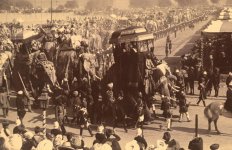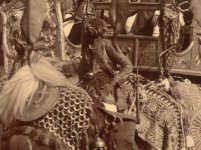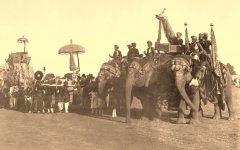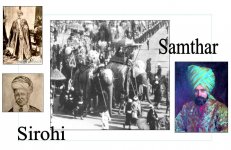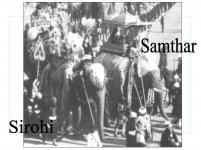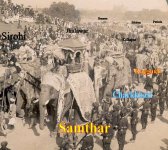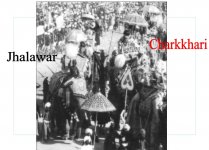Jb - I have a process or that. My first source would be a manuscript belonging to Inglis Sheldon-Williams that my friend Bill found at the British Library and copied for me. He drew sketches and took notes of the different contingents so he could later paint the scene. These is one of the sketches:
View attachment 193107
Then I go through all the newspaper cuts of the period that describe the groups, then through the few texts that describe the Delhi Durbar. If I don't find anything there I look for the flag colors, and pictures of the Indian museums to see if I can find a clue. Generally, all that process throw a pair of ideas. Also, I know that yellow and red photographed as black. I try to convert to black and white my images of Indian clothes nowadays to have an idea, although I know that that's not very accurate. At the end, I decide the colors left based on combination and my taste

Hope this explains it a bit.
